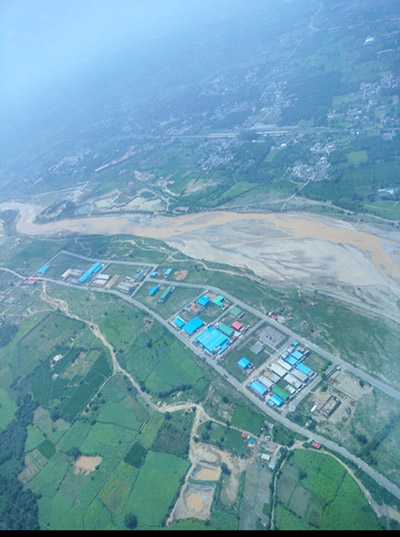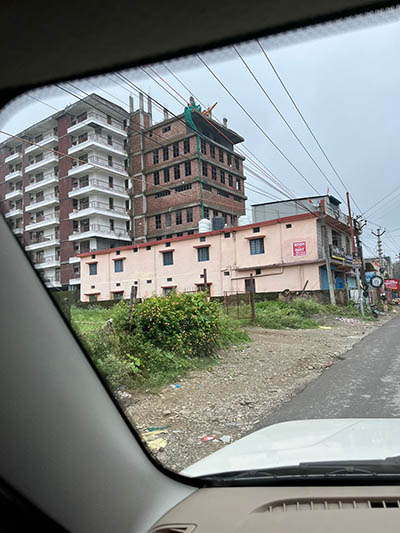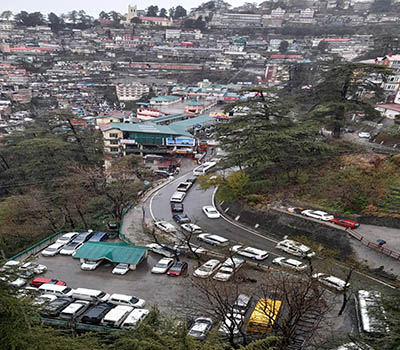SHIMLA/DEHRADUN: In the heart of the majestic Himalayan region, where the earth trembles and nature's fury know no bounds, the state-run guardians of safety have been caught napping.
The today's tremor that rattled Delhi, NCR, Himachal Pradesh, Uttarakhand, Lucknow, Jammu and Kashmir, Ladakh, and Nepal exposed a shocking truth – the State Disaster Response Management Systems of Himachal Pradesh (HPSDMA) and Uttarakhand (UKSDMA) if not the entire Himalayan region are woefully unprepared and utterly indifferent.
Over 118 years have passed since the last devastating Kangra earthquake, yet the lessons remain unlearned.
We live in the cataclysmic seismic zones 4 and 5, where the ground beneath feet is as unpredictable as a raging torrent. But these states have displayed a reprehensible lack of urgency in upgrading their early warning systems.
In the face of imminent disaster, they have chosen complacency over responsibility if one goes by the lack of response to the series of tremors and natural disasters in the Himachal and Uttarakhand and perhaps the entire Himalayan region. 
HPSDMA and UKSDMA have shown their true colors by failing to sound the alarm or educate their residents on how to cope with the terrifying aftershocks that follow such tremors.
In Uttarakhand, the authorities have not bothered to modernize their alert system even after the devastating earthquakes in Pithoragarh and Pauri Garhwal in 2022.
Anoop Nautiyal, President of the SDFC Dehradun, laments this sorry state of affairs, pointing out that while the state governments claim to have implemented early warning systems for natural disasters, they have failed to update them.
It's astounding that alerts are still stuck in 2022, leaving the residents vulnerable and uninformed.
This needs to be updated and the government needs to make the early warning or alert system to work and make it functional, he said.
Civil society members rightly question the expenditure on disaster preparedness when the authorities responsible for HPSDMA and UKSDMA remain oblivious to their duty.
Lives hang in the balance, and yet, the official response has been nothing short of apathy.
The possible epicenter of the recent tremor was possibly in Nepal, registering 6.5 on the Richter scale, where many houses were rattled, while recording 3. 6 to 4.4 and 4.5 in various locations across these Himalayan states.
These seismic numbers are alarming, given their high-risk location. Why, then, has earthquake preparedness become a triviality for these states?
Despite a history of devastation that has claimed hundreds of lives each year, Himachal Pradesh and Uttarakhand remain unmoved.
The memories of more than 450 lives lost in flash floods and heavy rains in July and August of this year alone seem to have evaporated in Himachal?
Civil society, NGOs are now demanding a complete overhaul of HPSDMA, UKSDMA, and, in fact, all state disaster management authorities in the Himalayan region, including Jammu and Kashmir, Ladakh, Arunachal Pradesh, Assam, Manipur, Tripura, Nagaland, and Mizoram.
The goal is simple – to save precious lives and provide crucial alerts during and after aftershocks.
Experts emphasize that even when the earth trembles, residents can be educated on how to respond and seek safety.
The disastrous Kangra earthquake of 1905, which claimed thousands of lives and destroyed countless homes, should have been a lesson learned, but alas, it appears forgotten and consigned as footnote in the history books.
Kangra-Sundarnagar lies on the seismic fault line, posing a grave danger to its residents. Yet, the Himachal Pradesh state disaster management authority remains oblivious and it conducts mere mock drills as a mere ritual once in a year.
The natural disaster of 2023, the worst in 60 years in Himachal left a trail of destruction, with over 10,000 houses damaged and 450 lives lost.
But HPSDMA . seemed to have learned nothing from this tragedy, and the tremors continue to strike with lesser intensity, but with no lesser danger.
It is high time for HPSDMA, UKSDMA, and other state response systems in the Himalayan region to wake up to the reality of these tremors that signal impending disaster.
Will these authorities rise to the challenge, or will they continue to sleep on the job, squandering the funds meant to protect people?








